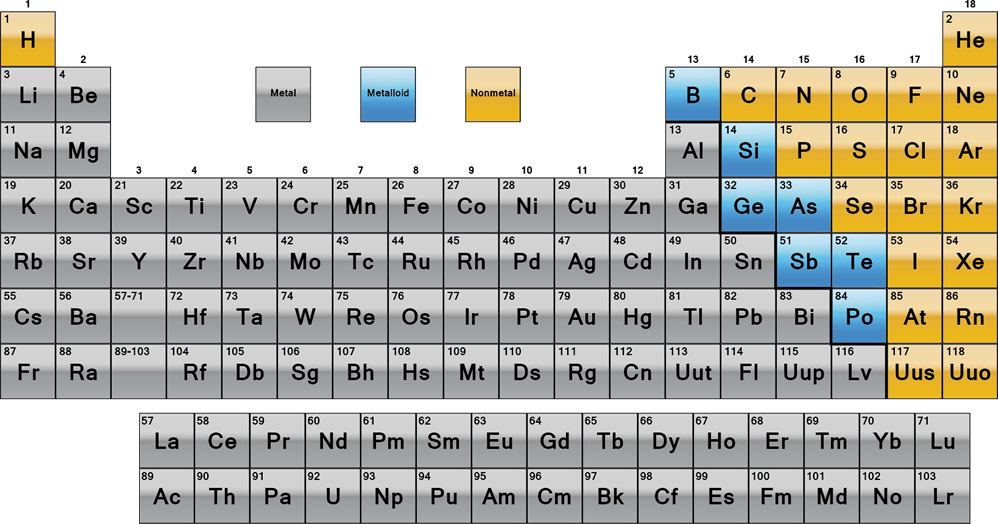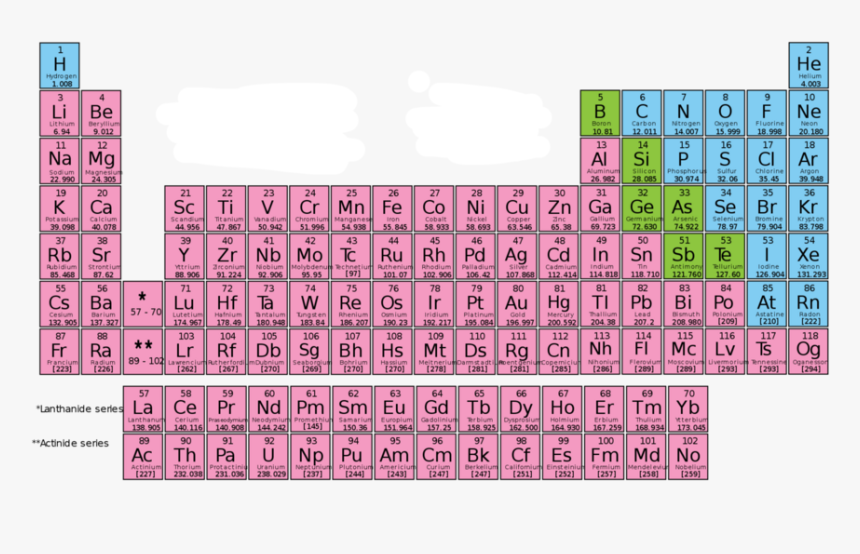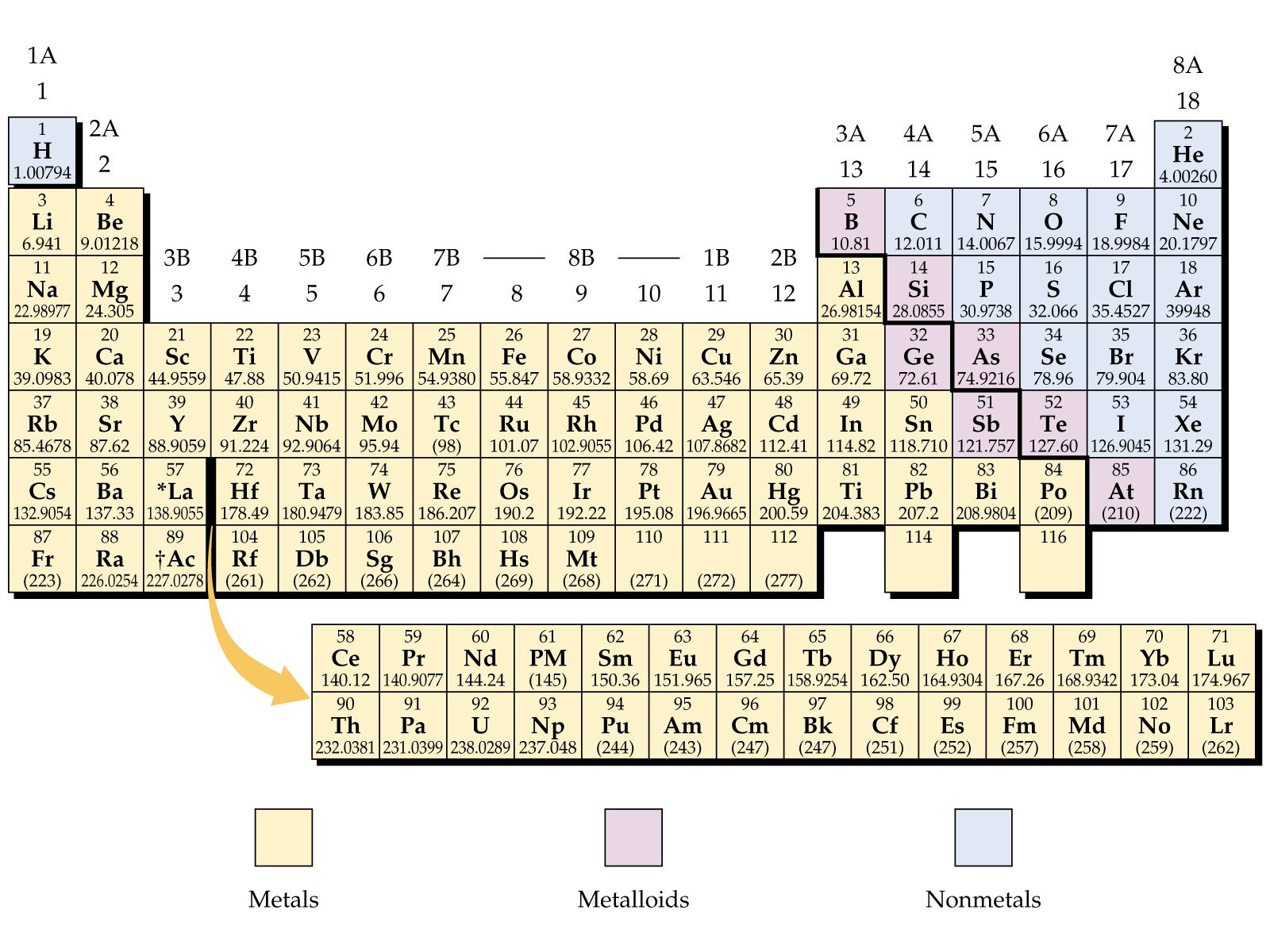Periodic Table Of Elements Metals Nonmetals Metalloids Printable - Web main team the primary selection of the periodic kitchen table comprises the elements with s and p electron designs. Those in black are solid at stp; ( edit | history) editors can experiment in this template's sandbox ( edit | diff) and testcases ( create) pages. Additionally, we’ll protect a number of the more technical metallic alloys, which include gold and silver. Alloys demonstrate different components, which include electric powered conductivity, lustre, and malleability. Most elements are this type; Those in gray have not yet been discovered (they also have muted. Color coding for atomic numbers: Periodic table labeled with nonmetals elements which are in the top right corner of the periodic table are classified as nonmetals ( hydrogen is also a nonmetal which is located in the group 1). Web this is a collection of printable periodic tables that show the metals, metalloids (semimetals), and nonmetals as well as the properties of these important element groups.
List of Elements Semimetals or Metalloids
The unit was designed for 6/7th graders in nyc. Web main team the primary selection of the periodic kitchen table comprises the elements with s and p electron designs. So let’s dive right into it! Why are metals on the left of periodic table? Additionally, we’ll protect a number of the more technical metallic alloys, which include gold and silver.
Where can you find metals, non metals and noble gases in the periodic
This table has the atomic numbers, element symbols, and atomic masses rounded to two decimal places. Most elements are this type; The colors denote the element groups. The periodic table is organized in families and periods. The unit was designed for 6/7th graders in nyc.
Periodic Table Of Elements Metals Nonmetals Metalloids Printable
Color coding for atomic numbers: Web updated on january 28, 2020 elements of the periodic table are grouped as metals, metalloids or semimetals, and nonmetals. As currently categorized on enwiki. Metals with the exception of hydrogen, all elements that form positive ions by losing electrons during chemical reactions are called metals. The properties of these element groups are listed, too.
3.1 Periodic table IB Alchemy
Alloys demonstrate different components, which include electric powered conductivity, lustre, and malleability. Metals with the exception of hydrogen, all elements that form positive ions by losing electrons during chemical reactions are called metals. I’ve included a pdf to make printing easier. Why are metals on the left of periodic table? The colors denote the element groups.
The Parts of the Periodic Table
This lesson will help your students prepare for standardized tests by mastering the key concepts. Additionally, we’ll protect some of the more complex metallic alloys, which includes silver and gold. Those in black are solid at stp; One useful way is by metals, nonmetals, and metalloids. Web free color periodic table printable this color printable periodic table of the elements.
Periodic Table Metals Nonmetals Metalloids 2019, HD Png Download kindpng
Web free color periodic table printable this color printable periodic table of the elements includes the element name, atomic number, symbol, and atomic weight. Additionally, we’ll protect some of the more complex metallic alloys, which includes silver and gold. Printable periodic table black and white hd Most elements are this type; ( edit | history) editors can experiment in this.
Metals Nonmetals and Metalloids Periodic Table
They are typically solid, malleable, and good conductors of heat and electricity. This table has the atomic numbers, element symbols, and atomic masses rounded to two decimal places. Most elements are this type; A table in which all the known elements. Web periodic table with metals, nonmetals and metalloids shows that the metals are on the left side, nonmetals are.
Labeled Periodic Table of Elements with Name
A table in which all the known elements. Metalloids can also be called semimetals. As currently categorized on enwiki. Well in this article, you will also get to know the total number of metals, nonmetals and metalloids present on the periodic table. I’ve included a pdf to make printing easier.
History of the Periodic Table CK12 Foundation Periodic table
Todd helmenstine here is the pdf file for this color periodic table so you can save and print it. Metals are good conductors of heat and electricity, and are malleable (they can be hammered into sheets) and ductile (they can be drawn into wire). Those in green are gases at stp; Those in red are synthetic (all are predicted to.
Groups and Periods of the Periodic Table Metals
This lesson will help your students prepare for standardized tests by mastering the key concepts. Additionally, we’ll protect some of the more complex metallic alloys, which includes silver and gold. Metals with the exception of hydrogen, all elements that form positive ions by losing electrons during chemical reactions are called metals. See also [ edit] the above documentation is transcluded.
Web periodic table (32 columns), colored by metal, metalloid, nonmetal. Web the elements with properties intermediate between those of metals and nonmetals are called semimetals (or metalloids). The properties of these element groups are listed, too. Those in gray have not yet been discovered (they also have muted. Metals with the exception of hydrogen, all elements that form positive ions by losing electrons during chemical reactions are called metals. Representative metals, metalloids, and nonmetals. Those in red are synthetic (all are predicted to be solid at stp ). One useful way is by metals, nonmetals, and metalloids. Color coding for atomic numbers: Chemists, who have an understanding of the variations of these properties, have been able to use this knowledge to solve a. Alloys demonstrate different components, which include electric powered conductivity, lustre, and malleability. This group involves each alloys and nonmetals. The unit was designed for 6/7th graders in nyc. Web updated on january 28, 2020 elements of the periodic table are grouped as metals, metalloids or semimetals, and nonmetals. This lesson covers the periodic table and its development by dimitri mendeleev, elements, how to read individual listings of elements on the table, periods, groups, metals, nonmetals, metalloids, and chemical families. I’ve included a pdf to make printing easier. This table has the atomic numbers, element symbols, and atomic masses rounded to two decimal places. Metals are good conductors of heat and electricity, and are malleable (they can be hammered into sheets) and ductile (they can be drawn into wire). See also [ edit] the above documentation is transcluded from template:periodic table (metals and nonmetals)/doc. The colors denote the element groups.
Elements Are Either Metals, Nonmetals, Or Semimetals.
The elements can be classified as metals , nonmetals, or metalloids. Metals with the exception of hydrogen, all elements that form positive ions by losing electrons during chemical reactions are called metals. Metals are good conductors of heat and electricity, and are malleable (they can be hammered into sheets) and ductile (they can be drawn into wire). Web a metalloid is an element that has properties that are intermediate between those of metals and nonmetals.
Todd Helmenstine Here Is The Pdf File For This Color Periodic Table So You Can Save And Print It.
This lesson will help your students prepare for standardized tests by mastering the key concepts. Elements numbered in blue are liquids at standard temperature and pressure (stp); Different types of metals on the periodic tabl e 2). Web the first table is a color version of the periodic table without the element names included.
The Properties Of These Element Groups Are Listed, Too.
Well in this article, you will also get to know the total number of metals, nonmetals and metalloids present on the periodic table. Web updated on january 28, 2020 elements of the periodic table are grouped as metals, metalloids or semimetals, and nonmetals. Web this is a collection of printable periodic tables that show the metals, metalloids (semimetals), and nonmetals as well as the properties of these important element groups. Chemists, who have an understanding of the variations of these properties, have been able to use this knowledge to solve a.
Metals With The Exception Of Hydrogen, All Elements That Form Positive Ions By Losing Electrons During Chemical Reactions Are Called Metals.
Those in black are solid at stp; Periodic table labeled with nonmetals elements which are in the top right corner of the periodic table are classified as nonmetals ( hydrogen is also a nonmetal which is located in the group 1). Color coding for atomic numbers: Why are metals on the left of periodic table?

/periodic-table--illustration-738787291-59888b4822fa3a00109a466d.jpg)





/periodic-table-58ea5e0a5f9b58ef7ed0a788.jpg)


